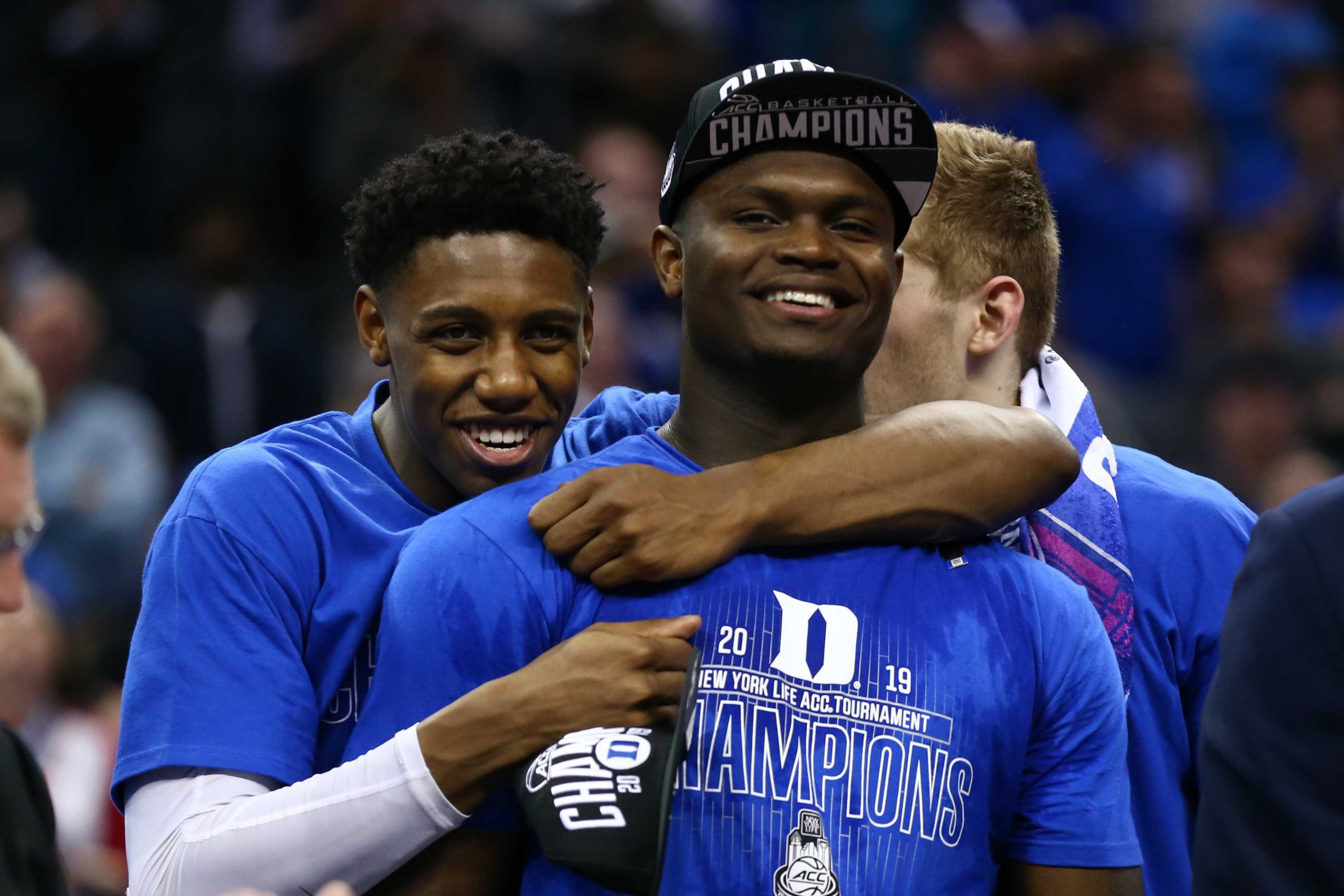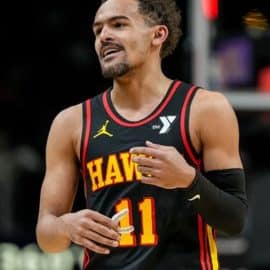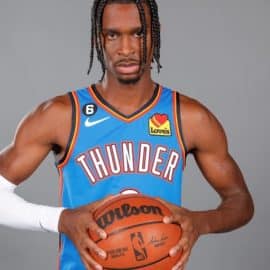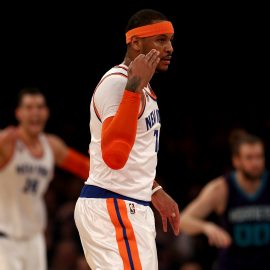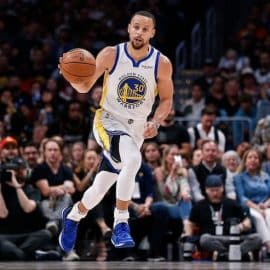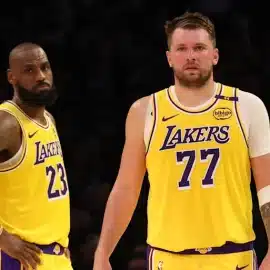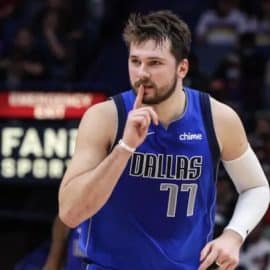It’s that time of year again.
College basketball is now over – sadly – and it’s time for the NBA Draft.
There is no question Zion Williamson will go first overall, and I don’t think any GM would be crazy enough to pass on him, but there seems to be a battle for the second pick.
With some late bloomers and some guys who came in with high pedigree that have fallen a bit, there is still a lot of talent in the lottery and end of the first round.
Which franchises’ will get their star of the future? Who will be the steal of the draft? Who will take their team from a playoff team to a championship caliber team?
These are all questions everyone can’t wait to find out.
Here is the first – of many – mock drafts before June 26.
1. New York Knicks – Zion Williamson (Duke, F)
The biggest star to take head into the NBA since LeBron James, Williamson will change the future of any franchise that is lucky enough to draft him. People have talked all year long about the beating his knees and body will take, being 280 pounds and playing above the rim like he does.
While his jumper is a work-in-progress, Williamson will make an immediate impact on the defensive end, and more importantly, in transition. The NBA being extremely transition oriented, his frame will be difficult to stop, even by guys who are 10 years older than him.
2. Phoenix Suns – Ja Morant (Murray State, PG)
The most exciting player not named Zion Williamson, Ja Morant is almost as explosive on the offensive end. His athleticism at the point guard position is something we haven’t seen since Russell Westbrook, and yes, he’s that explosive.
Averaging 24.5 points per game this year, he also led the NCAA in assist rate at 51 percent. His ability to score while also be a playmaker for others is shown with his exceptional pick-and-roll ability, something every team looks for out of a point guard in the NBA.
3. Cleveland Cavaliers – R.J. Barrett (Duke, G)
Someone who was considered to be the consensus No. 1 pick, saw his game fly under-the-radar, as much as a top five pick could. Playing side-by-side with Zion Williamson, Barrett spent a lot of time in either spot up opportunities – only 30.8 percent from three – or late shot clock one-on-one drives.
Though averaging nearly 24.0 points a game, Barrett did have a lot of weaknesses in his game. Whether it be a lack of ability to hit outside shots, a lack of explosiveness on drives, or his inability to make others better around him, Barrett’s game fits an NBA style much better than college. A backcourt of Collin Sexton and R.J. Barrett will cause nightmares for teams in the future.
4. Chicago Bulls – Jarrett Culver (Texas Tech, G)
One of the best stories in the country was Texas Tech’s run to the National Championship game, and Culver was the main reason for it. His ball handling, ability to finish at and above the rim, and his passing ability, all at 6-foot-6, makes him an intriguing prospect on the wing.
More of a second tier “star” on a team, his ability to have an impact on the game without the team running any plays for him, has him at the top of most draft boards. His versatile skillset on both ends will make him a favorite in the locker room, as well as on the court.
5. Atlanta Hawks – De’Andre Hunter (Virgingia, F)
Hunter is fresh off of a terrific National Championship performance in front of the entire country and though he probably didn’t “improve” his draft position too much, his performance assured teams of his ability.
Not a flashy or sexy pick, Hunter is someone who will mold into your traditional 3-and-D type player. Best known for his defensive ability, which is terrific at that, Hunter still has a lot of growing on the offensive end in creating for himself.
6. Washington Wizards – Coby White (North Carolina, G)
Someone who’s stock soared all year, Coby White is one of the most explosive scorers in the draft not named Zion Williamson or Ja Morant. Getting better as the year went on in terms of facilitating, White is a lethal scorer and shooter. One of the quickest players from end-to-end, he is a one man fast break, even off of a make.
Good height for a point guard, and 6-foot-4, he can score off the dribble, spot up, or pull-up. With John Wall a bit of a question mark next year and heading forward, White would be a terrific addition to the backcourt.
7. New Orleans Pelicans – Cam Reddish (Duke, G)
Though Reddish was the odd man out in Durham, he still projects well in the NBA and has all of the tools to do so. With a 7-foot-1 wingspan, he will be another traditional 3-and-D player. Known for his terrific shooting ability, he only shot 33 percent from three this year.
Never really finding his groove, he still has tremendous upside and can be a great building block for any franchise looking to get the ball in the hands of their young draft picks.
8. Memphis Grizzlies – Darius Garland (Vanderbilt, G)
Still a bit of a question mark for most teams, coming off of a torn meniscus within the first month of the season, Garland possesses all of the tools to be a top point guard in the NBA.
A terrific scorer, he was averaging 16.8 points through five games, while also shooting 47.8 percent from three. Either on spot up opportunities or off the dribble threes, he has great rhythm that is always consistent. A bouncy guard who also has decent size for a lead guard (6-foot-3), Garland will be a perfect fit for Memphis looking to mold their next point guard of the future after Mike Conley.
9. Atlanta Hawks – Bol Bol (Oregon, C)
The Hawks went with John Collins last year to find a stabilizing piece in the front court, now this year, they find him a partner with Bol Bol. One of the most intriguing players in the draft, at 7-foot-3 and a 7-foot-8 wingspan, he also has the ability to stretch the floor, shooting 52 percent in his nine games played last year.
Obviously it is always dangerous taking a 7+ footer coming off of a foot injury, but Bol Bol has way too much upside to pass on him. Though very skinny, his length will be a factor on the defensive end, and he won’t clog up the paint on the offensive end, leaving room for Collins, while also bringing a lethal pick-and-pop with Trae Young.
10. Minnesota Timberwolves – Brandon Clarke (Gonzaga, F)
One of the more underrated lottery picks in recent memory it feels, Clarke is a dynamic player who can play a couple different positions, making a huge impact defensively, leading the country in defensive rating (84.1). A great shot blocker and rebounder, at a rate of nine percent and 17 percent respectively, he also ranked fourth in the NCAA in blocks per game (3.1).
Though he lacks a three-point shot, he shot 68.7 percent from the field on almost 11 shots per game this past year, while having the best offensive rating in college basketball (137.9).
11. Los Angeles Lakers – Jaxson Hayes (Texas, C)
What could be one of the most important picks in Lakers history, they will go with a bit of a late bloomer in Jaxon Hayes. The freshman from Texas blew up during the second half of the season as a shot blocker and finisher above the rim. Great in transition, you can already see the alley-oops from LeBron to Hayes taking place in Staples Center.
12. Charlotte Hornets – Nickeil Alexander-Walker (Virginia Tech, G)
From one Walker to another, it seems like the Hornets’ and Kemba may be headed for a separation. Bringing in Alexander-Walker brings a plus size lead guard who can score, shoot, defend, and make plays for others. This may be a bit of a stretch – most mock drafts have him going late teens – but the Hornets are in need of a point guard and can’t take the chances that they get Kemba to return.
As a sophomore, he hit over 40 percent from three, and has the ability to finish in the lane with an above average floater. Terrific off pick-and-rolls, he also averaged over 4.0 assists per game last year.
13. Miami Heat – Romeo Langford (Indiana, G)
One of the best fluid athletes in the draft, he won’t overpower anyone, but rather lull them to sleep. As quiet and emotionless as a superstar there was in college, Langford has a mixed bag of tricks on the offensive end.
Something that went unnoticed was his exceptional pick-and-roll game. Ranked second in pick-and-roll effectiveness last season, Langford’s length as a two guard is something scouts love. Though he only shot 27 percent from three last season, he came on strong late, shooting 35 percent over the last month and a half. Replacing Dwayne Wade is no easy task, but Langford seems like a perfect fit.
Here's a look at the most efficient pick and roll scorers among power conference players during the 2018-19 season. pic.twitter.com/CwHeI1r0Cc
— Synergy Basketball (@SynergySST) April 17, 2019
14. Boston Celtics – Goba Bitadze (International, C)
The MVP of the ABA Liga at 19 years old, the 6-foot-11 center is one of the best NBA ready big men out of Europe in recent memory. Able to make 38 percent of his threes, he can also pass at a high level, perfect for a Brad Stevens’ Celtics team that loves to share the ball, especially through their center position with Al Horford.
15. Detroit Pistons – Nassir Little (North Carolina, F)
A projected top-five pick in the preseason, Little struggled at times to find his role in an upperclassmen heavy lineup on the wing. A physical specimen with his size, frame and length, Little lives above the rim on both ends. Still raw in terms of creating his own shot offensively, he makes a living on the offensive glass. With a team that lacks athleticism and explosiveness on the wing, he would come in and start immediately.
16. Brooklyn Nets – Sekou Doumbouya (France, F)
Another very raw talent, he is also extremely young and has great athleticism. The Nets are already known for taking chances on international talent, and why not again? Though he won’t be NBA ready in the next year or two most likely, Brooklyn is set for the future with 12 of their 15 players on their playoff roster under the age of 27.
17. Orlando Magic – Talen Horton-Tucker (Iowa State, G)
A history of drafting long athleticism, Tucker may join the list that includes Mo Bamba, Jonathan Isaac, and trading for Elfrid Payton shortly after the draft in 2014. A versatile player, Horton-Tucker has a lot of room to grow, but could be a flyer in the late teens.
18. Indiana Pacers – Keldon Johnson (Kentucky, G)
A do-it-all player on the wing, Johnson can scrap in the paint and on the glass, while still shooting 38 percent from three. Still not much of a guy who can create his own shot, he will need to get better in that category, but Johnson does bring a versatility that the Pacers don’t really have on the wing.
19. San Antonio Spurs – Grant Williams (Tennessee, F)
An undersized power forward, but not quick enough to guard a small forward, which means he is a perfect fit for Coach Pop and the Spurs. Someone who has a high-IQ, good passing abilty, somewhat versatile, and hard worker, Williams will find a role easily on the roster.
20. Boston Celtics – Tyler Herro (Kentucky, G)
Known for his shooting, and confidence, Herro seems like a good fit for a Celtics’ team that has a crowded backcourt but won’t be able to keep everyone. An extremely quick release, Herro was starting to be used as a J.J. Redick type player towards the end of his freshman season, running off of every screen possible.
21. Oklahoma City Thunder – Cameron Johnson (North Carolina, F)
With two ball dominant players in Russell Westbrook and Paul George, the Thunder need as many spot up shooters as possible. Johnson, at 45.7 percent from three this past year, ranked seventh in the country. At 6-foot-8, he has the height plus an even higher, and quicker release to knock down shots all over the floor.
22. Boston Celtics – P.J. Washington (Kentucky, F)
Another versatile hybrid forward that would fit perfectly in the Celtics’ system. With great passing ability, Washington will make his money living from the free throw line and in. An improved shooter from distance, Washington will see his impact most on the defensive end of the floor, and the offensive glass.
23. Utah Jazz – Matisse Thybulle (Washington, G)
With nightmares of guarding James Harden for the second straight postseason, the Jazz need to continue to build up the wing versatility. Thybulle was the best wing defender in the country, averaging 4.5 steals and 2.8 blocker per 40 minutes. Nobody can slow down a guy like Harden, but at 6-foot-5 and a 7-foot wingspan, Thybulle can try.
24. Philadelphia 76ers – Rui Hachimura (Gonzaga, F)
A physical forward who can bully his way to the basket, he still needs to diversify his game, with still a subpar three-point shot. With soft touch in the mid-range, Hachimura will bring more physical and intense play to team that is led by Joel Embiid in that category.
25. Portland Trail Blazers – KZ Okpala (Stanford, F)
Getting older on the wing, the Trail Blazers need to go younger and more athletic with their pick. Okpala shot up draft boards this season and became a 38 percent three-point shooter. An athletic forward, he is also 6-foot-9, with length, continuing the defensive ability they have with Aminu and Harkless.
26. Cleveland Cavaliers – Daniel Gafford (Arkansas, C)
A long, fluid athlete, Gafford brings energy and effort every play. At 7-foot-2, his defensive presence makes him special but is an improved post player (16.5 points per game). With a young and talented backcourt in Cleveland, with defensive question marks, a shot blocker is the last line of defense.
27. Brooklyn Nets – Kevin Porter (USC, G)
As mentioned earlier, the Nets are one of the younger but talented teams in the league so what’s adding another youngster to the crew. He won’t need to play significant minutes next year, but Porter has all of the potential to be a star.
28. Golden State Warriors – Mfiondu Kabengele (Florida State, C)
A team that has just about everything but a center, this seems like a no-brainer. With Boogie Cousins on just a one-year deal, the athleticism and effectiveness of Kabengele is a steal at the end of the first round.
29. San Antonio Spurs – Ty Jerome (Virginia, G)
A smart, shifty, and lights out shooter at the point guard position. Another perfect fir for the Spurs system, Jerome never tries to do too much, and will fit in perfectly with a team that shoots the best percentage from deep in the NBA.
30. Milwaukee Bucks – Chuma Okeke (Auburn, F)
A heartbreaking ACL injury against North Carolina in the Sweet 16, Okeke was rising quickly up draft boards. Still a question mark if he will decide to turn pro, Okeke makes winning plays on the floor, with a top-20 total plus/minus in the NCAA this past year.
By: Alec Lasley
Add The Sports Daily to your Google News Feed!
